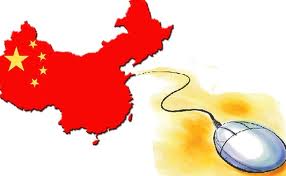China App Developers Need Local Strategy to Acquire Global Audience


Driven by the need to acquire users, but challenged by China's tough market, Chinese app developers are increasingly looking to promote their apps beyond local shores.
Doing so successfully, however, will require local adaptation and tweaking of their monetisation strategy, says Supersonic CEO Gil Shoham, whose company merged with ironSource last September. Forming what it touts to be the world's largest independent mobile ad platform; Shoham had said the union would offer mobile developers and advertisers – currently forced to work with multiple partners – the "most complete independent platform at scale".
In this Q&A with ExchangeWire, Shoham discusses why app developers in China are finding it tough to acquire users and monetise their products, and how they can resolve these challenges.
ExchangeWire: How is Supersonic involved in the China market?
Gil Shoham: Both Supersonic and ironSource have a strong presence in China, with strategic partners that include Baidu, Cheetah Mobile, Tencent, IGG, and Elex. Our strategy in the country is primarily to help software and app publishers expand into markets outside the region, including other parts of Asia-Pacific. Facing saturation in their own local market, Chinese companies see globalisation as one of the top priorities for 2016, and we want to help them achieve better monetisation and acquire global users.

Gil Shoham
We work closely with local developers from our offices in Beijing, Shenzen, and Shanghai and have been incorporating their feedback into our platform to meet their unique needs.
What are some key challenges developers in China and Asia-Pacific face with regards to monetising their apps?
As with most freemium apps, user acquisition is pivotal. How do you monetise users you don't have? Unfortunately, user acquisition in China is notoriously challenging, primarily due to fragmentation in the Android appstores, a lack of transparency, and the quality of traffic.
Furthermore, robust competition in the market, combined with the huge potential in English-speaking countries, are driving Chinese developers to look at promoting their apps overseas. For them to expand internationally, localising their monetisation strategy for a specific user base in a targeted geo is also a huge challenge.
Another challenge for Chinese developers, which their US counterparts also face, is having to work with multiple disparate ad networks to maximise ad revenue. We are addressing this issue with ironSource's Mediation Platform, and moving forward, we will work to provide a local technology to leverage Chinese ad networks.
How should app developers resolve these issues?
It's key that they work with partners that provide full transparency. Namely, partners that disclose traffic sources, bid prices, and exactly how app installs are generated, then optimise on post-install events to ensure future campaign success. Only then can developers accurately determine the quality of their user funnel and achieve ROI. Analytics platforms, such as Tune and Appsflyer, are great tools for tracking this data, and should be part of every developer's arsenal.
Another critical element is adapting and adjusting monetisation strategies to suit the culture and expectations of local users. For example, for Chinese developers, adding video ads into games would be considered unsuitable from a user experience standpoint.
It's also important that western developers understand the nuances of the Chinese app economy before diving in. Ramp up carefully, and only with the right partners or publishers that are concerned about your app's overall success, not just revenue.
What new challenges will the industry face in 2016?
Programmatic fraud and the quality of traffic are big challenges that app advertisers face, and will continue to face in 2016. Direct sales will continue to claim big budgets until brands are ready for programmatic or RTB media buys, which is a transition that is happening today as transparency improves.
In addition, there will be an increased focus on cross-device targeting. Tracking technology will need to be enhanced for brands and larger app publishers to address the multi-device consumer.
Compared to TV and print, app and game developers aren't traditional publishers. How do their requirements differ from traditional publishers?
The nature of traditional publishers is vastly different than digital, particularly when comparing a TV network to an app developer. Traditional publishers typically require large budgets and are driven by ratings data to set advertising prices. Granular data on users and their behaviour is dicey at best.
In comparison, app developers have lower costs to entry, alternate forms of monetisation, such as in-app purchases, and richer user datasets that are easily packaged with ad inventory.
Are existing ad tech tools able to meet these needs? Or is there a lack of understanding among ad tech vendors about developers' unique needs?
Absolutely, but getting there is not simply a plug-and-play scenario. Supersonic by ironSource work closely with local and global publishers to better understand the China market and provide them a customised end-to-end supply-side solution to help manage and optimise multiple demand sources.
How should app developers be tapping data to better monetise their offerings?
Data is a hot commodity in the app economy, and publishers sit on a trove of it. Aside from using data to better understand their users and in-app behaviour, publishers can leverage it to enhance their mobile marketing and user acquisition. First-party data can help determine which lapsed users to re-engage, which ones to ignore, which ones to entice with push notifications, and so on. Ad network partners can also use this data to create look-alike targeting for high-performance user acquisition campaigns.
Where does programmatic fit into their growth strategy?
While direct response and guaranteed campaigns certainly net higher eCPMs for publishers; they require sales teams, ad serving technology, and previously established relationships with advertisers. Even then, app marketers are pigeonholed by those publisher's specific audiences. Rapid user growth hinges on audience diversity and efficiency – something programmatic provides at scale.
Would you say programmatic fits better in a mobile ecosystem, since app developers, especially those in China, are able to achieve scale?
It's a combination of scale and data that makes mobile the better fit. In the absence of cookies, mobile has done a great job in layering first- and third-party data to achieve similar and, in many cases, enhanced levels of audience tracking. With the explosion of mobile payments, and the data that comes from that purchasing behaviour, along with the wide adoption of native and video ad formats, spend in this segment is skyrocketing in China, to the tune of USD$626.27m (£431.62m) by 2017, according to eMarketer.
Large publishers have a tremendous opportunity; which only looks to increase as data platforms become more widely available to both marketers and publishers in the China ad market.
Ad NetworkAdvertiserAPACChinaCross-ChannelDataMedia SpendMobileProgrammaticPublisherTargetingTrading








Follow ExchangeWire